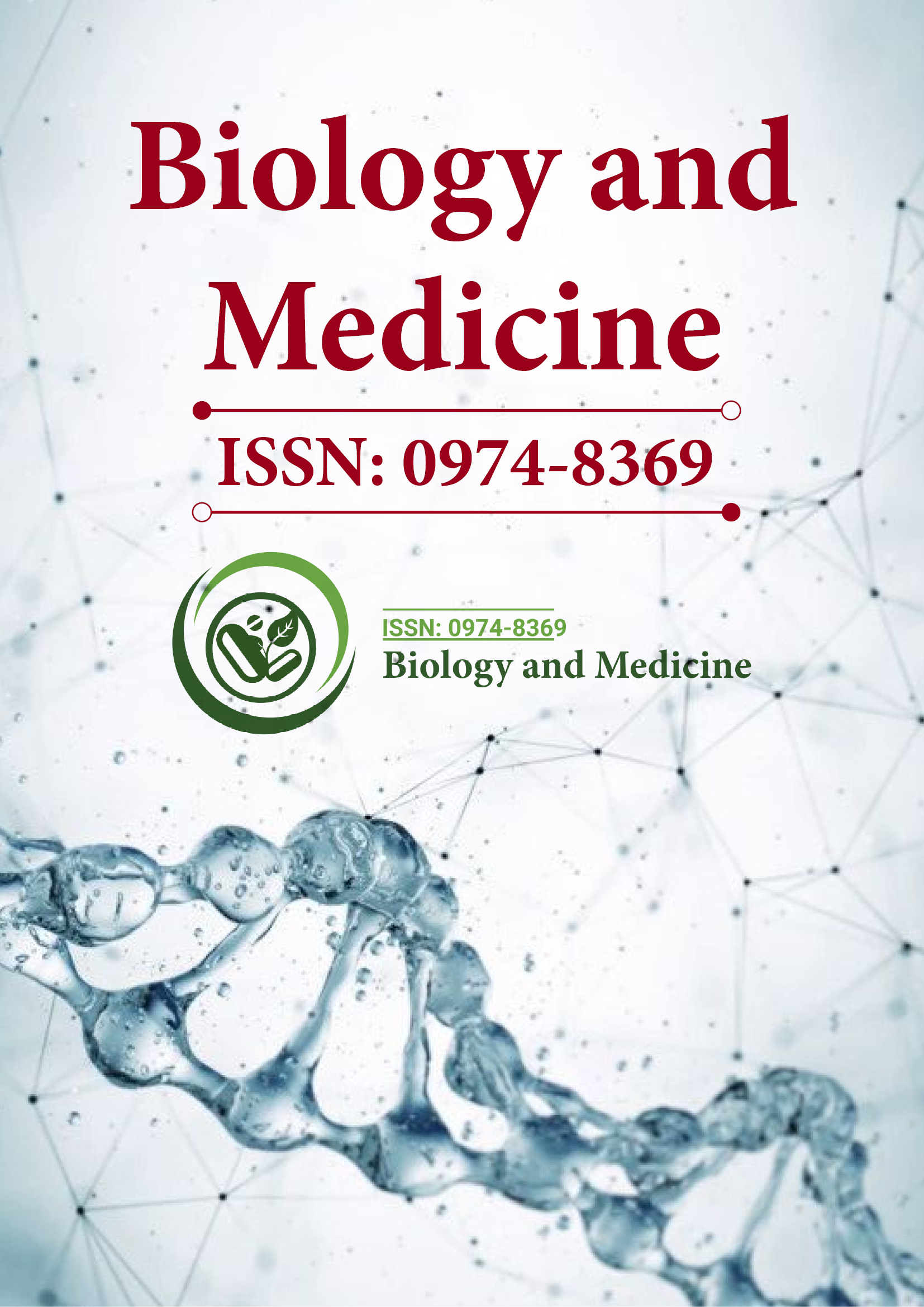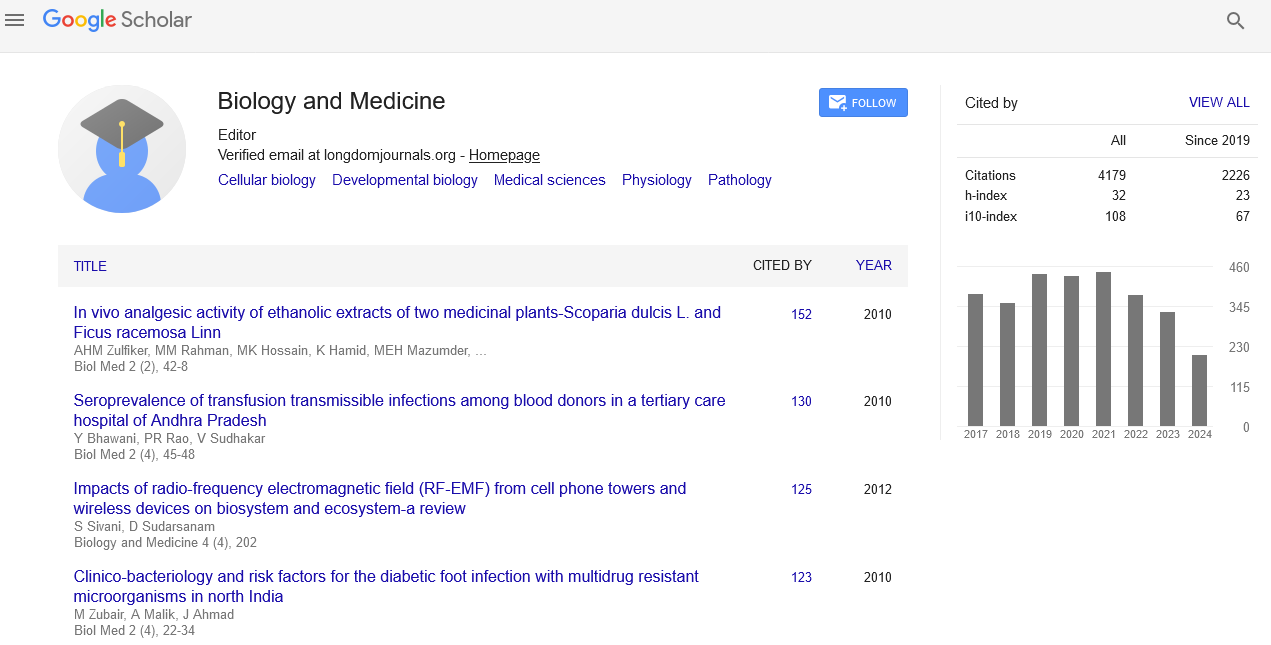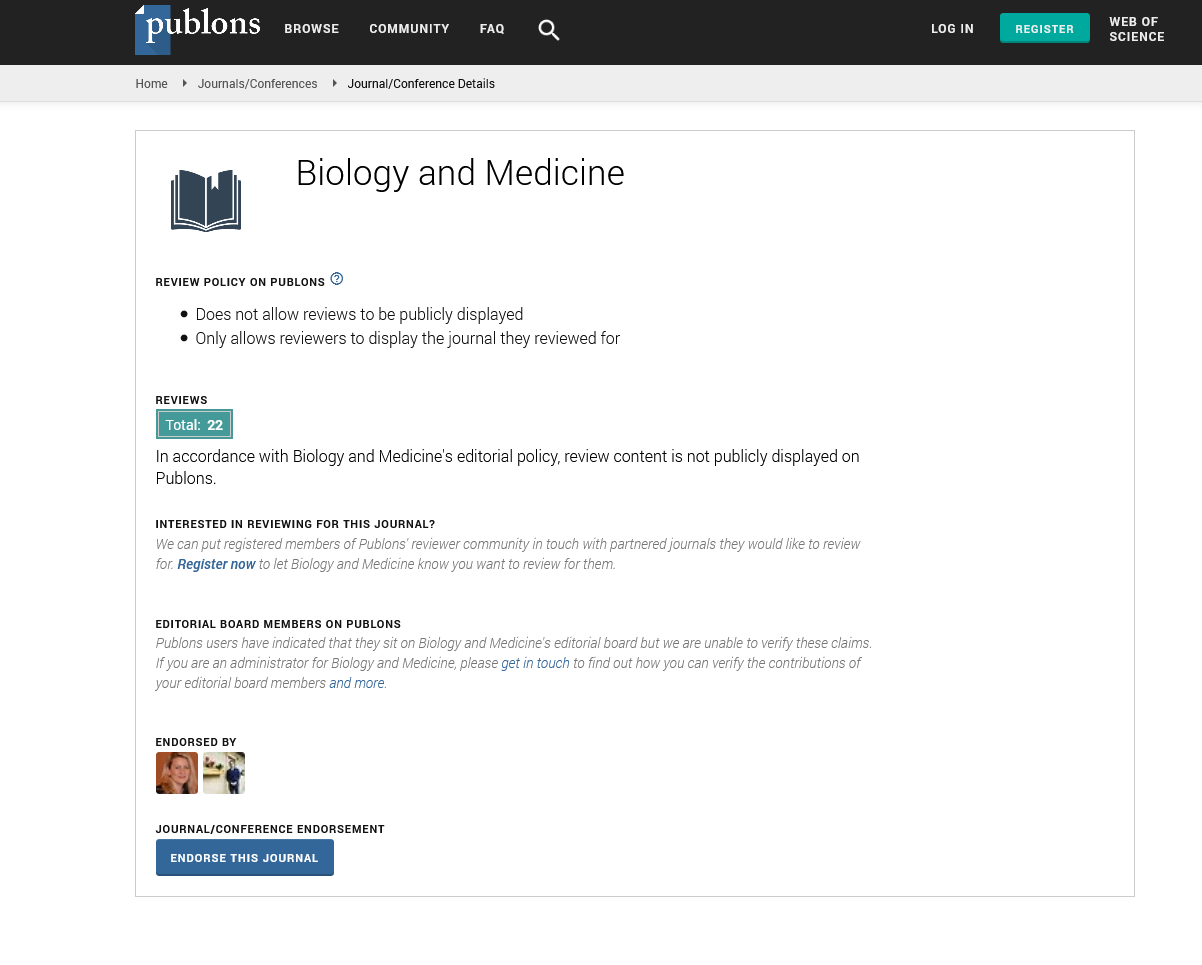Indexed In
- Open J Gate
- Genamics JournalSeek
- CiteFactor
- Cosmos IF
- Scimago
- Ulrich's Periodicals Directory
- Electronic Journals Library
- RefSeek
- Hamdard University
- EBSCO A-Z
- Directory of Abstract Indexing for Journals
- OCLC- WorldCat
- Proquest Summons
- Scholarsteer
- ROAD
- Virtual Library of Biology (vifabio)
- Publons
- Geneva Foundation for Medical Education and Research
- Google Scholar
Useful Links
Share This Page
Journal Flyer

Open Access Journals
- Agri and Aquaculture
- Biochemistry
- Bioinformatics & Systems Biology
- Business & Management
- Chemistry
- Clinical Sciences
- Engineering
- Food & Nutrition
- General Science
- Genetics & Molecular Biology
- Immunology & Microbiology
- Medical Sciences
- Neuroscience & Psychology
- Nursing & Health Care
- Pharmaceutical Sciences
Commentary - (2024) Volume 16, Issue 7
Regenerative Pathways in Cardiovascular Injury and Aging: Opportunities for Therapeutic Intervention
Eunhye Song*Received: 24-Jun-2024, Manuscript No. BLM-24-26727; Editor assigned: 26-Jun-2024, Pre QC No. BLM-24-26727 (PQ); Reviewed: 10-Jul-2024, QC No. BLM-24-26727; Revised: 17-Jul-2024, Manuscript No. BLM-24-26727 (R); Published: 24-Jul-2024, DOI: 10.35248/0974-8369.24.16.711
Description
Cardiovascular disease remains a leading cause of morbidity and mortality worldwide, driven by factors such as aging, lifestyle, and genetic predisposition. As the population ages, the prevalence of cardiovascular disorders, including myocardial infarction (heart attack) and heart failure is increasing. The regenerative capacity of the cardiovascular system declines with age, complicating recovery from injury and chronic disease. Understanding the regenerative pathways in cardiovascular injury and aging is essential for developing innovative therapeutic interventions to improve patient outcomes and enhance quality of life.
Cardiovascular injury such as myocardial infarction triggers a complex cascade of biological processes aimed at repairing damaged tissue and restoring function. The initial response to injury involves inflammation and cell death, followed by tissue repair and remodeling. In a healthy young individual, these processes can lead to effective healing and functional recovery. However, in older individuals, these pathways are often compromised, leading to incomplete repair and persistent dysfunction.
Several key regenerative pathways are activated in response to cardiovascular injury: Following injury, an inflammatory response is essential for clearing dead cells and initiating repair. Immune cells such as macrophages and neutrophils infiltrate the damaged tissue, releasing cytokines and growth factors that promote healing. However, chronic inflammation can impair regenerative processes and contribute to fibrosis and scar formation. Endothelial Progenitor Cells (EPCs) and Cardiac Stem Cells (CSCs) are involved in regenerating damaged cardiovascular tissues. EPCs contribute to the repair of endothelial cells lining blood vessels, while CSCs have the potential to differentiate into various cardiac cell types, including cardiomyocytes (heart muscle cells). The activation and recruitment of these progenitor cells are essential for effective tissue regeneration. The Extracellular Matrix (ECM) provides structural support to tissues and plays a role in tissue repair. During regeneration, the ECM undergoes remodeling to restore tissue architecture and function. Matrix Metalloproteinases (MMPs) and their inhibitors regulate this process, balancing tissue degradation and synthesis.
Aging significantly impacts the regenerative capacity of the cardiovascular system. Several factors contribute to this decline. Aging is associated with decreased functionality of cardiovascular stem cells. Reduced proliferation, impaired differentiation, and increased senescence of these cells hinder their ability to contribute to tissue repair and regeneration. Additionally, the regenerative potential of EPCs declines with age, affecting endothelial repair and angiogenesis. Chronic low-grade inflammation, or "inflammaging," is a feature of aging and adversely affects regenerative processes. Pro-inflammatory cytokines and oxidative stress contribute to endothelial dysfunction, impaired stem cell function and excessive fibrosis. With aging, the ECM becomes more fibrotic and less flexible, affecting tissue remodeling and repair. The accumulation of Advanced Glycation End-products (AGEs) in the ECM further impairs its function and contributes to stiffness and fibrosis.
Given the challenges associated with aging and impaired regeneration, several therapeutic strategies are being explored to enhance cardiovascular repair and improve outcomes: Stem cellbased therapies hold promise for regenerating damaged cardiovascular tissues. Strategies include injecting stem cells directly into the heart or using cell-based patches to promote tissue repair. Advances in stem cell biology, including the use of induced Pluripotent Stem Cells (iPSCs) and gene editing techniques, offer exciting possibilities for enhancing stem cell function and developing personalized treatments. Targeting chronic inflammation and fibrosis can improve regenerative outcomes. Drugs that modulate the inflammatory response or inhibit fibrosis-promoting pathways may enhance tissue repair and reduce scar formation. Research into anti-inflammatory and anti-fibrotic agents, such as Angiotensin II Receptor Blockers (ARBs) and Transforming Growth Factor-beta (TGF-β) inhibitors, is ongoing. Gene therapy approaches aim to modify or introduce genes that enhance regenerative pathways.Citation: Song E (2024). Regenerative Pathways in Cardiovascular Injury and Aging: Opportunities for Therapeutic Intervention. Bio Med. 16:711.
Copyright: © 2024 Song E. This is an open-access article distributed under the terms of the Creative Commons Attribution License, which permits unrestricted use, distribution, and reproduction in any medium, provided the original author and source are credited.


